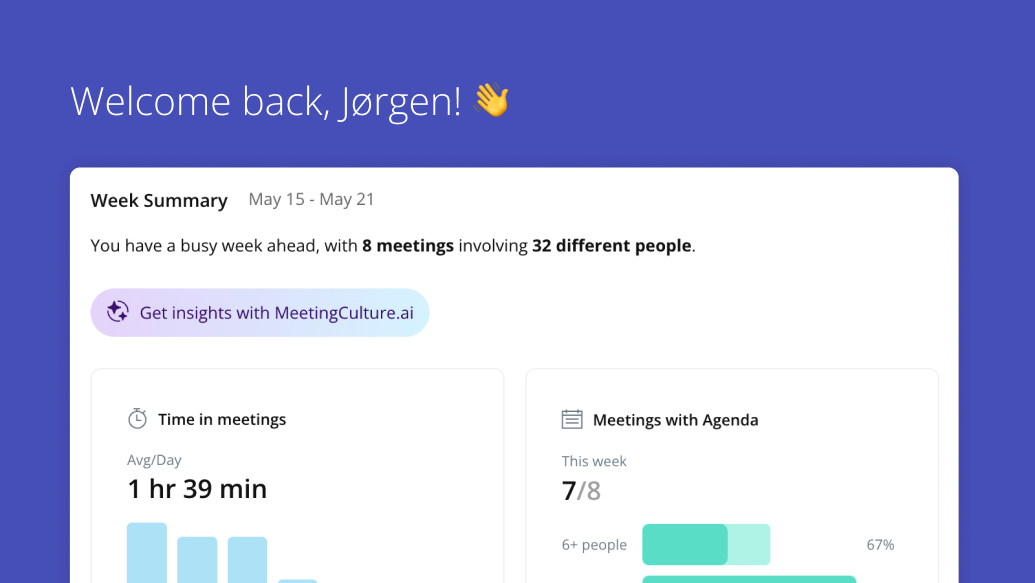Why Your Next Email Should Be a Meeting
Embrace the power of face-to-face interactions to enhance collaboration and build stronger relationships.
This workplace gripe is common and nearly cliché: “This meeting could have been an email!”
Whether it’s meetings with no agenda or structure, meetings that run long and don’t seem to have a point, or simply too many meetings, virtual and hybrid work has seemingly made teams everywhere meeting fatigued.
However, the best collaboration happens via video conferencing or in person. You can’t always ascertain tone via email and may miss out on those collaborative “aha” moments.
So, let’s go against the popular complaints and examine why that email should’ve been a meeting instead.
The Pitfalls of Email Communication
1) Email overload:
Email overload is a common problem faced by professionals worldwide. The sheer volume of messages and the time it takes to read, respond, and manage email chains can be overwhelming. It's easy for important information to get lost or buried in a crowded inbox, resulting in missed opportunities and delayed decision-making.
2) Miscommunication and lack of clarity:
Email lacks the nuances of non-verbal cues and tone of voice, leading to misunderstandings and misinterpretations. Lengthy email threads can be confusing, with key points lost in the shuffle. This communication breakdown can result in delays, inefficiencies, and potential conflicts.
The Power of Face-to-Face Meetings
1) Enhanced collaboration:
In-person meetings provide a unique opportunity for teams to unite, fostering stronger relationships and a shared sense of purpose. Face-to-face interactions allow immediate feedback, brainstorming, and exchanging ideas, leading to more innovative solutions. Collaborating in real-time allows teams to build upon each other's strengths, increasing creativity and productivity.
2) Improved decision-making:
Meetings provide an ideal platform for efficient decision-making. Instead of lengthy email threads, where decisions can be postponed or diluted, meetings encourage active participation and prompt resolution. Gathering stakeholders in one room can make decisions swiftly, ensuring clarity, alignment, and accountability.
3) Building stronger relationships:
Email exchanges lack the personal touch needed to develop meaningful connections among team members. In contrast, face-to-face meetings foster a sense of camaraderie and trust, leading to stronger relationships and improved teamwork. By encouraging open dialogue and active listening, meetings create an inclusive environment where everyone's voice can be heard and valued.
Harnessing Technology to Optimize Meetings
1) Meeting management apps like Decisions:
Businesses can use innovative meeting management apps such as Decisions to facilitate effective and streamlined meetings. These platforms integrate features like agenda creation, real-time collaboration, and task assignment, allowing teams to maximize their meeting time. These apps reduce administrative overhead and increase overall productivity by centralizing meeting-related activities.
2) Leveraging video conferencing tools:
In the age of remote work and global teams, video conferencing tools have become indispensable for bridging geographical gaps. Microsoft Teams, for example, enables face-to-face interactions regardless of physical location. It promotes effective communication, collaboration, and decision-making, enabling teams to work together seamlessly, regardless of geographical dispersion.
Also, tools like Microsoft Teams can integrate with specific meeting optimization tools, like Decisions, to take meetings to the next level.
Implementing a Mindful Meeting Culture
1) Strategic meeting planning:
Rather than defaulting to email, organizations should adopt a mindful approach to meeting planning. Companies can ensure that meetings are purposeful and focused by considering the purpose, desired outcomes, and participant relevance. By keeping meetings concise and action-oriented, teams can maximize their time together and avoid unnecessary gatherings.
2) Transparent communication:
Leaders should establish transparent communication channels within their organizations to minimize email clutter. By leveraging internal communication platforms, such as Microsoft Teams, teams can collaborate, seek clarification, and share real-time updates, reducing the reliance on back-and-forth email exchanges.
With the Decisions meeting management app, team members can centralize their collaboration with live, shared agendas with connective features like comments on agendas and the ability to suggest or request agenda topics.
Embracing the Meeting-Email Balance
While we’ll advocate for the power of meetings all day, it's still important to strike a healthy balance between meetings and email communication. Quick updates, information sharing, and non-critical discussions can still be handled effectively through email. However, meetings are the way to go when it comes to complex topics, critical decision-making, and fostering collaboration.
To Sum it Up
In today's largely virtual and hybrid workplaces, it's time to reevaluate the role of email in our daily work lives. By embracing face-to-face meetings as a more powerful and efficient communication tool, businesses can enhance collaboration, improve decision-making, and strengthen team dynamics. By leveraging technology and fostering a mindful meeting culture, organizations can optimize productivity, drive innovation, and ultimately achieve their goals faster and more precisely. So, the next time you consider drafting an email, ask yourself: "Could this be a meeting instead?"

